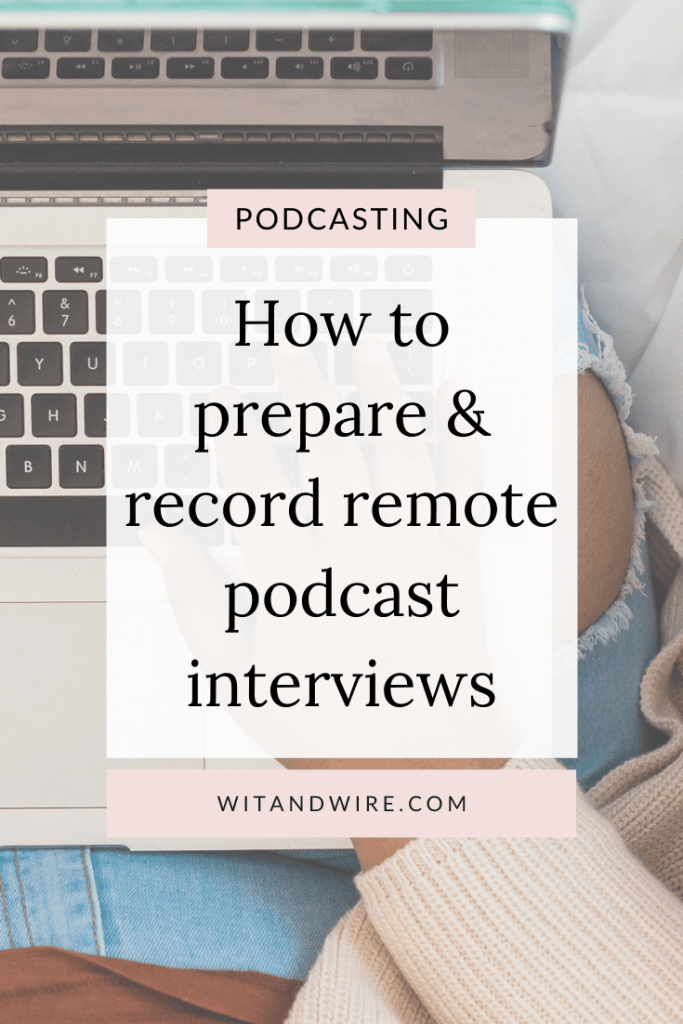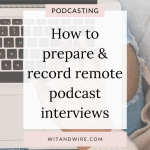New podcaster Amora Brown asks for tips and best practices for interviewing remote guests for her podcast. She asks about preparing for remote interviews, remote recording software, and my favorite editing tools.
By the end of this episode, you’ll learn…
- The importance of multitrack recording
- My favorite remote recording tool, and why it’s better than Zoom
- How to ask open-ended questions to get the most out of your guests
- Which tools I recommend for beginners trying to start editing their own podcasts
- Which filler words to cut out, and which to leave in
- And more!
LISTEN OR SUBSCRIBE FOR FREE IN YOUR FAVORITE PODCAST APP:
Apple Podcasts | Spotify | Overcast | RSS
📌 Wit & Wire Programs: Some of the courses mentioned in this episode have been sunset, but you can learn more about all of our active Wit & Wire programs by visiting witandwire.com/courses.
Remote interview recording tools:
- Descript: A podcast recording and editing tool with remote recording functionality (my top pick)
- Zencastr: Remote remote recording tool
- Riverside: Record high-quality audio and video, and stream to social platforms.
Podcast editing tools:
- Descript: A modern way to edit your podcast by editing your written transcript (and the audio updates to match). It’s my current top recommendation.
- Hindenburg Pro: If you’re looking for a classic podcast editing experience, Hindenburg is a great option with a user-friendly interface. (Their pricing is now monthly rather than a one-time payment.)
- Audacity: A popular free editing software.
Connect with Amora Brown
- YouTube: AmoraBrown
- Instagram: @amora_brown


Melissa Guller is the founder of Wit & Wire, where we help everyday experts become profitable course creators. She previously worked full-time for Ramit Sethi, Teachable, and General Assembly. Today, she shares simplified tech tutorials and modern marketing strategies through our blog, YouTube, and Wit & Wire Weekly newsletter

